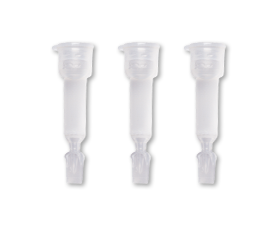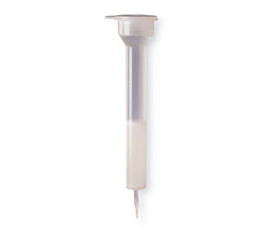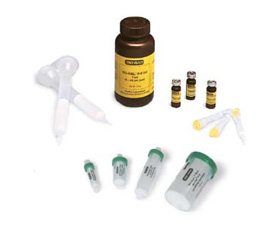Gel Filtration Chromatography Applications
Gel filtration chromatography, a type of size exclusion chromatography, can be used to either fractionate molecules and complexes in a sample into fractions with a particular size range, to remove all molecules larger than a particular size from the sample, or a combination of both operations. Gel filtration chromatography can be used to separate compounds such as small molecules, proteins, protein complexes, polysaccharides, and nucleic acids when in aqueous solution. When an organic solvent is used as the mobile phase, the process is instead referred to as gel permeation chromatography.
Gel filtration chromatography can also be used for:
- Fractionation of molecules and complexes within a predetermined size range
- Size analysis and determination
- Removal of large proteins and complexes
- Buffer exchange
- Desalting
- Removal of small molecules such as nucleotides, primers, dyes, and contaminants
- Assessment of sample purity
- Separation of bound from unbound radioisotopes
Gel filtration chromatography media for all of the above uses are available in prepacked gravity flow columns, spin columns, low-pressure and medium-pressure chromatography columns, and bottled resins.
Gel Filtration Chromatography Mechanism
In a gel filtration chromatography column, the stationary phase is composed of a porous matrix, and the mobile phase is the buffer that flows in between the matrix beads. The beads have a defined pore size range, known as the fractionation range. Molecules and complexes that are too large to enter the pores stay in the mobile phase and move through the column with the flow of the buffer. Smaller molecules and complexes that are able to move into the pores enter the stationary phase and move through the gel filtration column by a longer path through pores of the beads. 
Any molecule or complex that is above the fractionation range for a particular gel filtration chromatography column will move through the column faster than any molecule that can enter the stationary phase. Therefore, any constituent in the sample that is above the fractionation range will elute first (in the void volume) before anything that is in the fractionation range. The minimum size that will remain in the mobile phase and not enter the stationary phase is known as the exclusion limit. Bio-Rad offers gel filtration chromatography media and columns with exclusion limits ranging over three orders of magnitude, from 100 daltons to 100,000 daltons (100 kDa).
Molecules and complexes that can enter the stationary phase will be fractionated according to their sizes. Smaller molecules will migrate deep into the pores and will be retarded more than larger molecules that do not so easily enter the pores, and are thus eluted from the column more quickly. This difference in pore migration leads to fractionation of components by size with the largest eluting first.
In gel filtration chromatography columns designed for desalting, buffer exchange, and the removal of small molecules such as nucleotides, the salts and small compounds readily enter the pores, are retarded, and migrate more slowly through the column than the larger proteins or nucleic acids. Therefore, the components of interest in the sample are eluted in advance of salts, nucleotides, etc. DNA cleanup kits using this mechanism often contain gel filtration spin columns.
Resolution, here defined as the sharpness of the boundaries between size fractions, is determined by bead size and a number of other factors. Smaller bead size generally yields higher resolution in a gel filtration chromatography column. Compact molecules diffuse through the stationary phase faster than linear molecules. Size exclusion, fractionation range, and elution rate are affected by buffer composition, ionic strength, and pH. For the fractionation of complex mixtures of proteins, elution times and size exclusion limits may need to be determined empirically.
Gel Filtration Chromatography Media
An important criterion for gel filtration chromatography media is that media is inert and that nothing in the sample or any buffer binds to the media. Another consideration is the type of gel filtration column being used and whether it is used in a pressurized chromatography system or gravity flow or spin columns. If a pressurized chromatography system is being used, both the column and the media must be able to tolerate the pressure and flow rates used.
Commonly used media for gel filtration chromatography are based on agarose or polyacrylamide beads, dextrose for gravity or low-pressure systems, and polymeric resins for medium-pressure systems. The choice of media depends on the properties of the components to be separated and other experimental factors. The following are general considerations when determining the choice of gel filtration chromatography media:
- Fractionation range
- Size exclusion limit
- Operating pressure
- Flow rate
- Sample viscosity
- pH range
- Autoclavability
- Tolerance for water-miscible organic solvents; some samples may be more soluble in a water-organic mix
- Tolerance for detergents, chaotropic agents, formamide, etc.
- Operating temperature
The types of samples, choice of media, and the chromatography system setup will determine which parameters are the most important for a given purification application.
Chromatography Systems, Columns and Media
-
Chromatography Systems
-
Chromatography Columns
-
Chromatography Media
Related Topics
Chromatography Systems, High Performance Liquid Chromatography, Biotechnology Equipment




